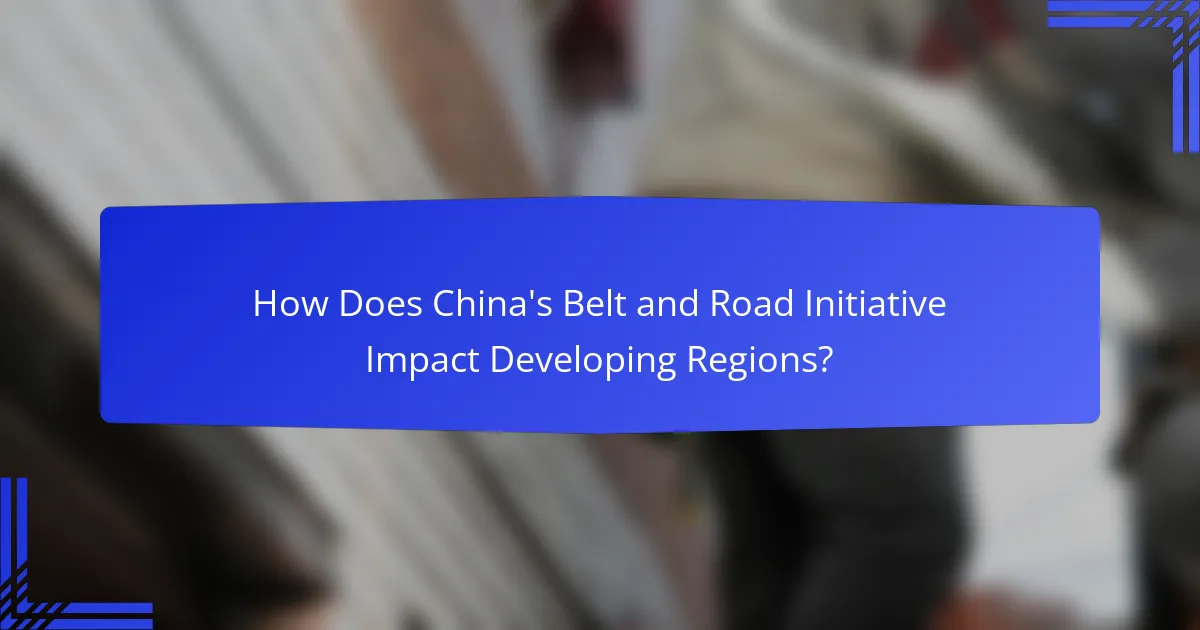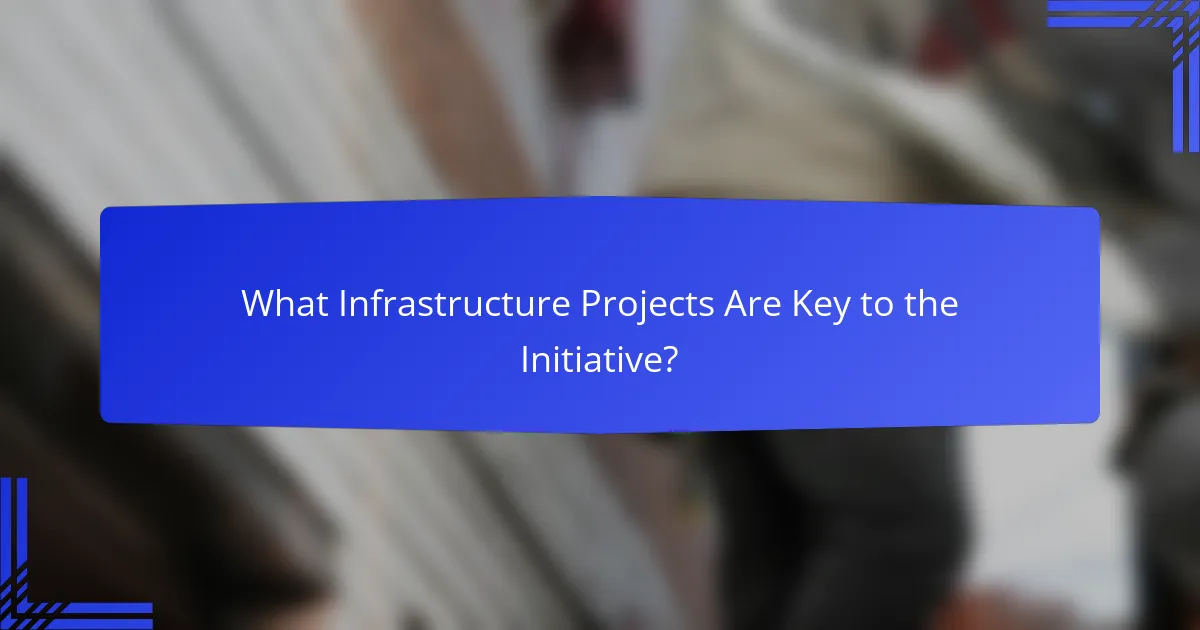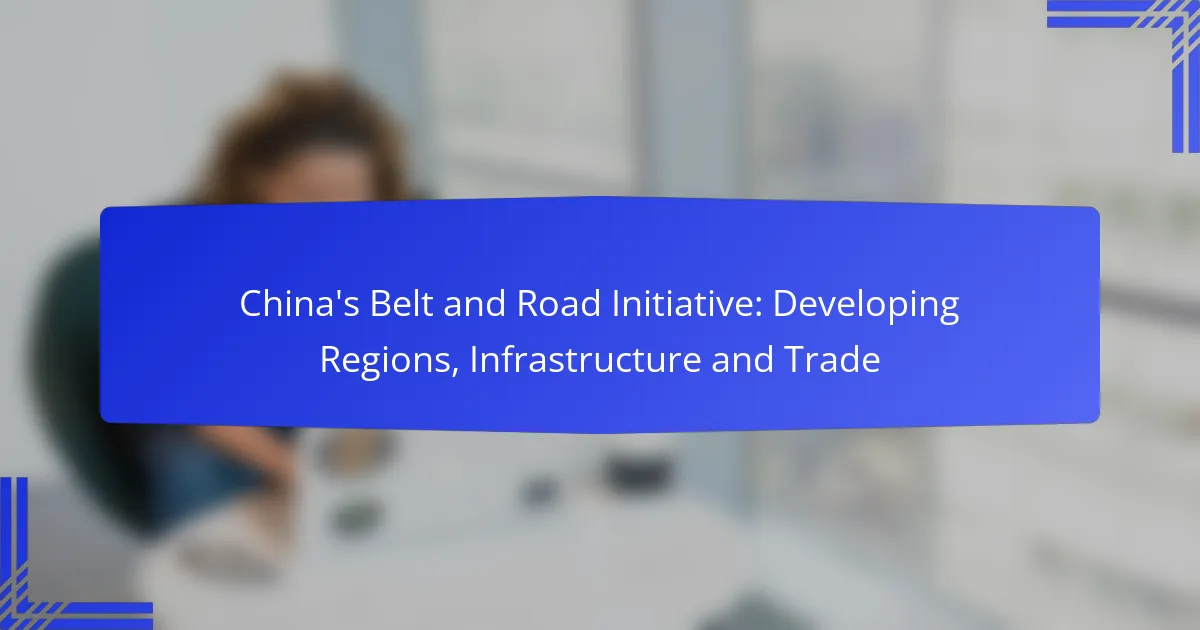China’s Belt and Road Initiative (BRI) is a transformative project aimed at enhancing infrastructure and boosting trade in developing regions. By creating a network of trade routes connecting Asia, Europe, and Africa, the BRI facilitates economic growth and integration through major transport corridors, railways, and port developments.

How Does China’s Belt and Road Initiative Impact Developing Regions?
China’s Belt and Road Initiative (BRI) significantly impacts developing regions by enhancing infrastructure, boosting trade, and fostering economic growth. This ambitious project aims to create a network of trade routes that connect Asia, Europe, and Africa, facilitating development in less economically advanced areas.
Infrastructure development
The BRI focuses on building essential infrastructure such as roads, railways, ports, and energy projects in developing regions. These improvements are crucial for enhancing connectivity and reducing transportation costs, which can lead to increased economic activity.
For example, the construction of a new railway line can cut travel time between major cities from days to mere hours, significantly benefiting local businesses and trade. Countries like Kenya and Pakistan have already seen substantial infrastructure investments under the BRI.
Increased trade opportunities
By improving infrastructure, the BRI opens up new trade routes and opportunities for developing regions. Enhanced connectivity allows local producers to access larger markets, both domestically and internationally.
As trade barriers decrease and logistics improve, countries participating in the BRI can expect to see a rise in exports. For instance, agricultural products from Southeast Asia can reach European markets more efficiently, boosting local economies.
Economic growth stimulation
The BRI stimulates economic growth in developing regions by attracting foreign investment and increasing local production capabilities. Improved infrastructure and trade opportunities create a more favorable environment for businesses to thrive.
Countries that engage with the BRI often experience higher GDP growth rates as a result of increased economic activity. This growth can lead to improved public services and living standards for the local population.
Job creation
Job creation is a direct benefit of the BRI, as infrastructure projects require a significant workforce. Local labor is often employed in construction, maintenance, and operation of new facilities, leading to reduced unemployment rates.
Additionally, as businesses expand due to improved trade conditions, new jobs are created in various sectors, including manufacturing and services. This can help lift communities out of poverty and improve overall economic stability.
Access to global markets
The BRI enhances access to global markets for developing regions by integrating them into a broader economic network. This access allows local businesses to compete on an international scale, increasing their visibility and potential customer base.
For instance, countries in Central Asia can leverage improved transport links to export natural resources or manufactured goods, thus diversifying their economies and reducing reliance on a single market. This integration is essential for long-term economic resilience and growth.

What Infrastructure Projects Are Key to the Initiative?
The Belt and Road Initiative (BRI) encompasses numerous infrastructure projects that aim to enhance connectivity and trade across participating regions. Key projects include major transport corridors, railways, and port developments that facilitate economic growth and integration.
China-Pakistan Economic Corridor
The China-Pakistan Economic Corridor (CPEC) is a flagship project of the BRI, involving a network of roads, railways, and energy projects. Spanning over 3,000 kilometers, it connects Gwadar Port in Pakistan to China’s Xinjiang region, significantly reducing travel time for goods.
CPEC includes investments in energy generation, such as coal and renewable sources, aiming to address Pakistan’s energy shortages. The corridor is expected to enhance trade and create thousands of jobs, although concerns about debt sustainability and local impacts persist.
East Coast Rail Link in Malaysia
The East Coast Rail Link (ECRL) is a major infrastructure project designed to improve connectivity between Malaysia’s east and west coasts. Stretching approximately 688 kilometers, it will facilitate the movement of goods and passengers, boosting economic activity in the region.
This project is expected to reduce travel time significantly and enhance trade efficiency. However, it has faced scrutiny regarding its financing and potential environmental impacts, making careful planning and stakeholder engagement essential.
China-Laos Railway
The China-Laos Railway is a key component of the BRI, linking Kunming in China to Vientiane in Laos over a distance of about 414 kilometers. This railway aims to enhance trade routes and promote tourism between the two countries.
By providing a faster alternative to road transport, the railway is expected to stimulate economic growth in Laos. However, challenges such as maintenance costs and the need for skilled labor in railway operations must be addressed to ensure its long-term viability.
Port projects in Africa
Port projects in Africa are crucial for enhancing trade connectivity under the BRI. Notable developments include investments in ports like Djibouti and Mombasa, which serve as strategic gateways for goods entering and leaving the continent.
These projects aim to improve infrastructure, increase cargo capacity, and reduce shipping times. However, local communities often express concerns about environmental impacts and equitable economic benefits, highlighting the need for inclusive planning and development strategies.

What Are the Trade Benefits of the Belt and Road Initiative?
The Belt and Road Initiative (BRI) offers significant trade benefits by facilitating smoother international commerce, enhancing infrastructure, and fostering investment opportunities. These advantages can lead to increased economic growth for participating countries, particularly in developing regions.
Lower trade barriers
The BRI aims to reduce trade barriers by promoting tariff reductions and simplifying customs procedures among member countries. This can lead to lower costs for businesses and consumers, making goods more accessible across borders.
For instance, countries involved in the initiative may negotiate bilateral trade agreements that eliminate or significantly reduce tariffs on key exports. This creates a more favorable environment for trade, encouraging countries to engage more with one another.
Enhanced logistics networks
Improved logistics networks are a cornerstone of the BRI, as it invests in transportation infrastructure such as roads, railways, and ports. These developments streamline the movement of goods, reducing transit times and costs.
For example, a new railway connecting China to Southeast Asia can cut shipping times from weeks to days, allowing businesses to respond more quickly to market demands. Enhanced logistics not only benefit exporters but also improve supply chain efficiency for local industries.
Increased foreign direct investment
The BRI encourages foreign direct investment (FDI) by creating a more stable and interconnected economic environment. Countries that participate in the initiative often see an influx of investment from Chinese firms looking to establish operations abroad.
This investment can take various forms, including infrastructure projects, manufacturing facilities, and technology partnerships. As a result, local economies can benefit from job creation and technology transfer, further boosting trade capabilities.

What Challenges Does the Belt and Road Initiative Face?
The Belt and Road Initiative (BRI) faces several significant challenges that can impact its effectiveness and sustainability. Key issues include concerns over debt sustainability, geopolitical tensions among participating countries, and environmental impacts associated with large-scale infrastructure projects.
Debt sustainability concerns
Many countries involved in the BRI are grappling with high levels of debt, raising concerns about their ability to repay loans associated with infrastructure projects. This situation can lead to financial instability, particularly in developing nations where economic resources are limited.
For example, nations like Sri Lanka and Pakistan have faced difficulties in managing their debts, prompting discussions about restructuring or renegotiating terms with China. Stakeholders should carefully assess the financial implications of BRI projects to avoid falling into unsustainable debt traps.
Geopolitical tensions
The BRI has sparked geopolitical tensions, particularly between China and other major powers like the United States and India. These tensions can complicate international relations and impact the implementation of BRI projects.
Countries may find themselves caught in a geopolitical struggle, leading to hesitance in participating fully in BRI initiatives. It is crucial for nations to navigate these tensions carefully, balancing their economic interests with diplomatic relations.
Environmental impacts
Large-scale infrastructure projects under the BRI can have significant environmental consequences, including habitat destruction, pollution, and increased carbon emissions. These impacts can undermine local ecosystems and contribute to climate change.
For instance, road and rail construction can disrupt wildlife habitats and lead to deforestation. Stakeholders should prioritize sustainable practices and conduct thorough environmental assessments to mitigate adverse effects and promote eco-friendly development.
